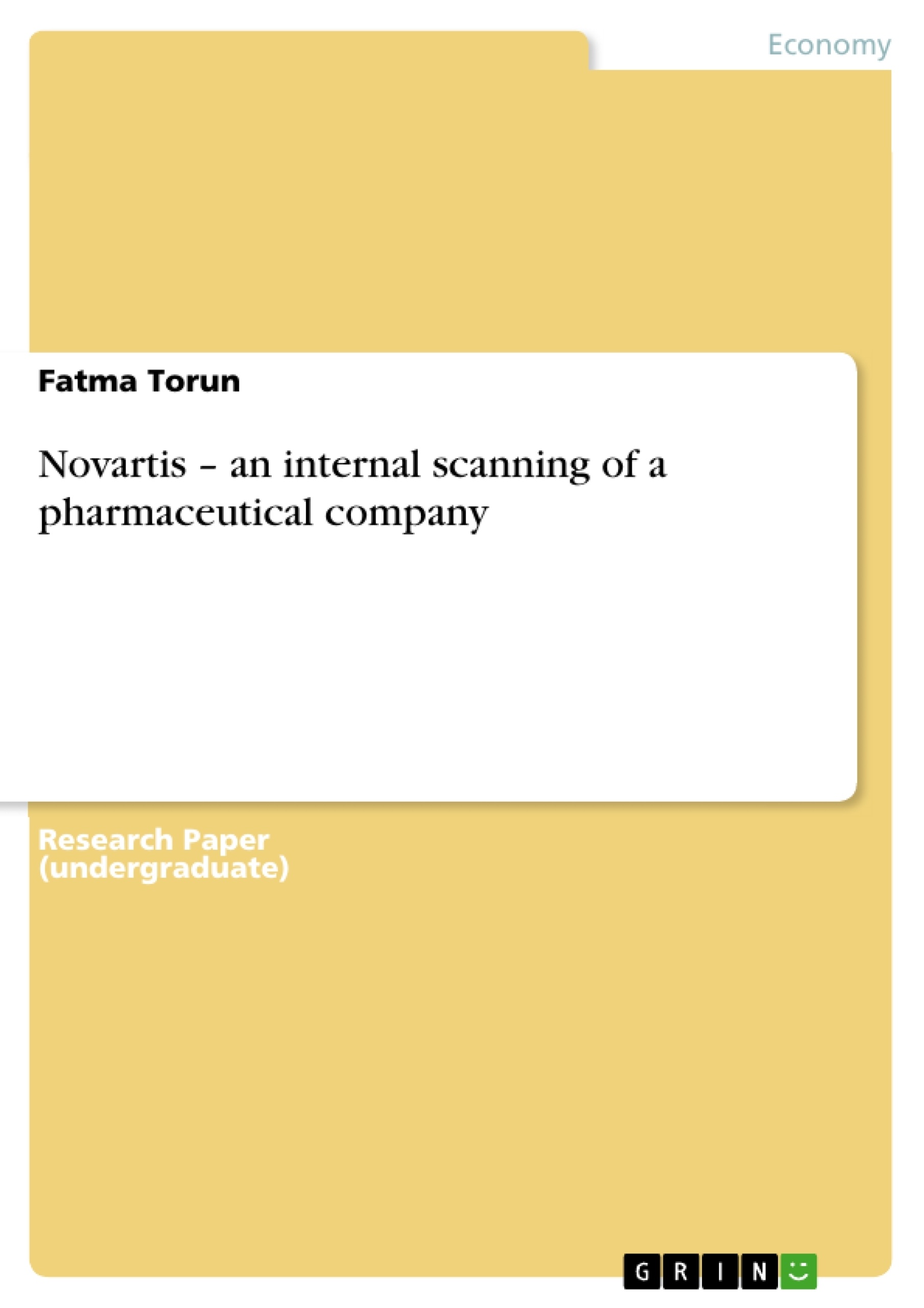There is great value in reviewing the road an organization has travelled to get it to the place it is today. Accordingly, the process of identifying where you have been is both a qualitative and quantitative process. This study will analyse the background of the company and determine in detail the internal resources.
Table of Contents
- I. Introduction
- II. Company Background
- 2.1 Current Performance and Results
- 2.2 Strategic Posture
- 2.2.1 Mission
- 2.2.2 Objectives and Strategies
- III. Internal Scanning
- 3.1 Structure analysis: Corporate structure
- 3.2 Culture analysis: Corporate culture
- 3.3 Internal Analysis of Resources and Functions
- 3.3.1 Internal Resource Analysis
- 3.3.2 Analysis of functional areas
- 3.4 Competitive advantages of Novartis
- IV. Conclusion
Objectives and Key Themes
The objective of this study is to analyze the internal aspects of Novartis, a pharmaceutical company formed from the merger of Ciba-Geigy and Sandoz. The analysis will explore the company's background, current performance, strategic posture, internal resources, and competitive advantages. This will be achieved through an internal scan of the company's structure, culture, and key functional areas.
- Company Performance and Financial Results
- Strategic Positioning and Objectives
- Internal Resource Analysis (Financial, Human, Intangible)
- Organizational Structure and Culture
- Competitive Advantages
Chapter Summaries
I. Introduction: This chapter emphasizes the importance of understanding a company's history to understand its current state. It frames the study as a qualitative and quantitative analysis of Novartis' background and internal resources.
II. Company Background: This chapter details Novartis' formation through the 1996 merger of Ciba-Geigy and Sandoz. It describes the company's focus on research and development for health and well-being products and outlines its two main divisions: Novartis Pharmaceuticals (focused on prescription drugs) and Novartis Consumer Health (focused on drugs for consumer and animal health). The chapter uses examples of top-performing products to illustrate the company's success, highlighting the sales figures of its top ten products in June 2003. This section lays the groundwork for a deeper understanding of the company's foundation and product portfolio.
III. Internal Scanning: This chapter delves into a comprehensive internal analysis of Novartis. It explores the company's structure, analyzing its organizational chart and how different departments interact. Further, it examines the corporate culture, identifying prevailing values and norms. A significant portion of the chapter is dedicated to analyzing the internal resources of the company, encompassing financial resources, human capital, and intangible assets such as knowledge networking. Crucially, it also evaluates the performance of key functional areas such as marketing and research & development, providing insights into their contributions to the overall success of the company and identifying areas for potential improvement or strategic advantage.
Keywords
Novartis, pharmaceutical company, internal scanning, strategic management, corporate structure, corporate culture, resource analysis, financial performance, competitive advantage, marketing, research and development, human resources, intangible resources, mergers and acquisitions.
Novartis Internal Analysis: Frequently Asked Questions
What is the main objective of this study?
This study aims to analyze the internal aspects of Novartis, a pharmaceutical company, exploring its background, current performance, strategic posture, internal resources, and competitive advantages through an internal scan of its structure, culture, and key functional areas.
What topics are covered in the Novartis internal analysis?
The analysis covers Novartis' company background (including its formation through the merger of Ciba-Geigy and Sandoz and its current performance and strategic posture), internal scanning (including structure, culture, and resource analysis of financial, human, and intangible assets), and key functional areas such as marketing and R&D. The analysis also identifies Novartis' competitive advantages.
What is included in the "Company Background" section?
This section details Novartis' creation via the 1996 merger of Ciba-Geigy and Sandoz. It describes its focus on R&D for health products, its two main divisions (Pharmaceuticals and Consumer Health), and illustrates its success with sales figures of its top products (as of June 2003).
What does the "Internal Scanning" section encompass?
This section provides a comprehensive internal analysis of Novartis, including its organizational structure, corporate culture, and a detailed analysis of its internal resources (financial, human, and intangible). It also evaluates the performance of key functional areas like marketing and R&D, highlighting potential for improvement and strategic advantage.
What are the key themes explored in this analysis?
Key themes include company performance and financial results, strategic positioning and objectives, internal resource analysis (financial, human, and intangible assets), organizational structure and culture, and competitive advantages.
What are the key chapters of the analysis?
The analysis is structured into four chapters: I. Introduction, II. Company Background, III. Internal Scanning, and IV. Conclusion. Chapter summaries provide a detailed overview of each section's content.
What keywords are associated with this Novartis analysis?
Keywords include Novartis, pharmaceutical company, internal scanning, strategic management, corporate structure, corporate culture, resource analysis, financial performance, competitive advantage, marketing, research and development, human resources, intangible resources, and mergers and acquisitions.
What type of analysis is used in this study?
The study employs both qualitative and quantitative analysis to examine Novartis' background and internal resources.
What is the purpose of the introduction chapter?
The introduction emphasizes the importance of understanding a company's history to comprehend its current state and frames the study as a comprehensive analysis of Novartis' background and internal resources.
What is the significance of the conclusion chapter?
While not explicitly detailed, the conclusion chapter is implied to synthesize the findings from the previous chapters and offer an overall assessment of Novartis' internal strengths and weaknesses, possibly suggesting future strategic directions.
- Citar trabajo
- Fatma Torun (Autor), 2004, Novartis – an internal scanning of a pharmaceutical company, Múnich, GRIN Verlag, https://www.grin.com/document/37239



